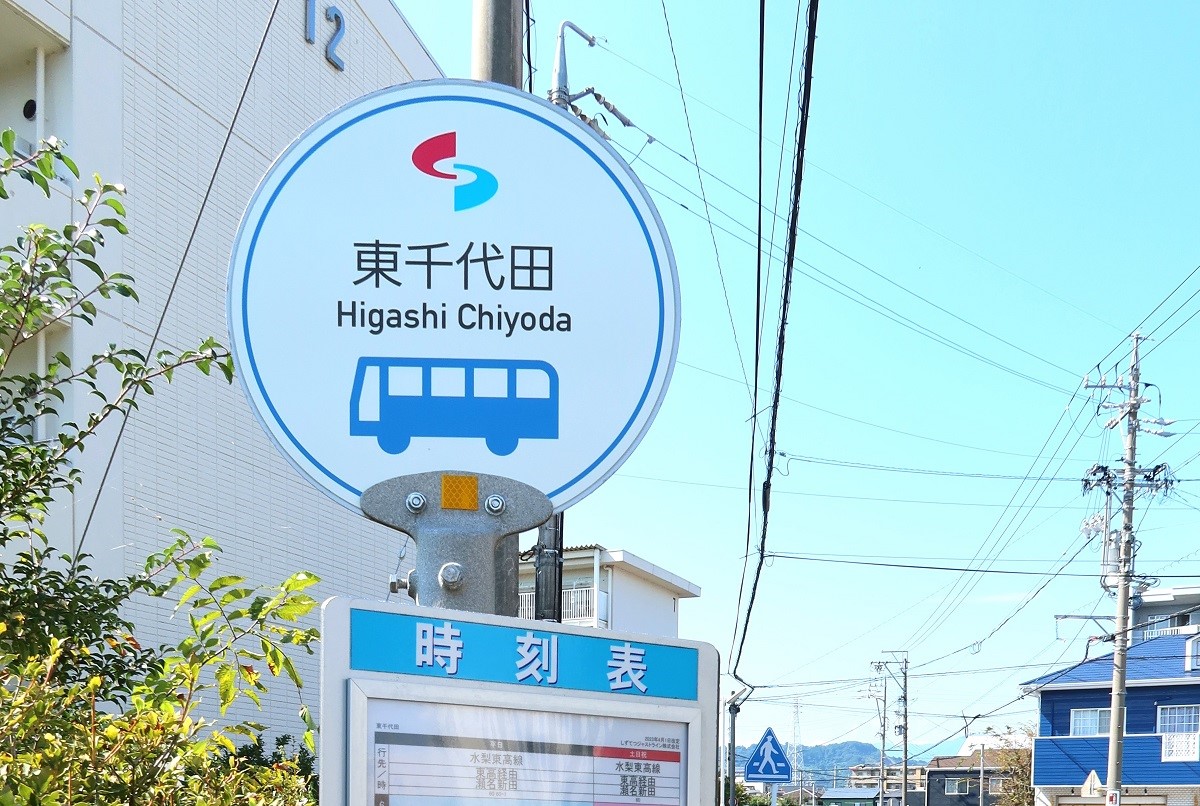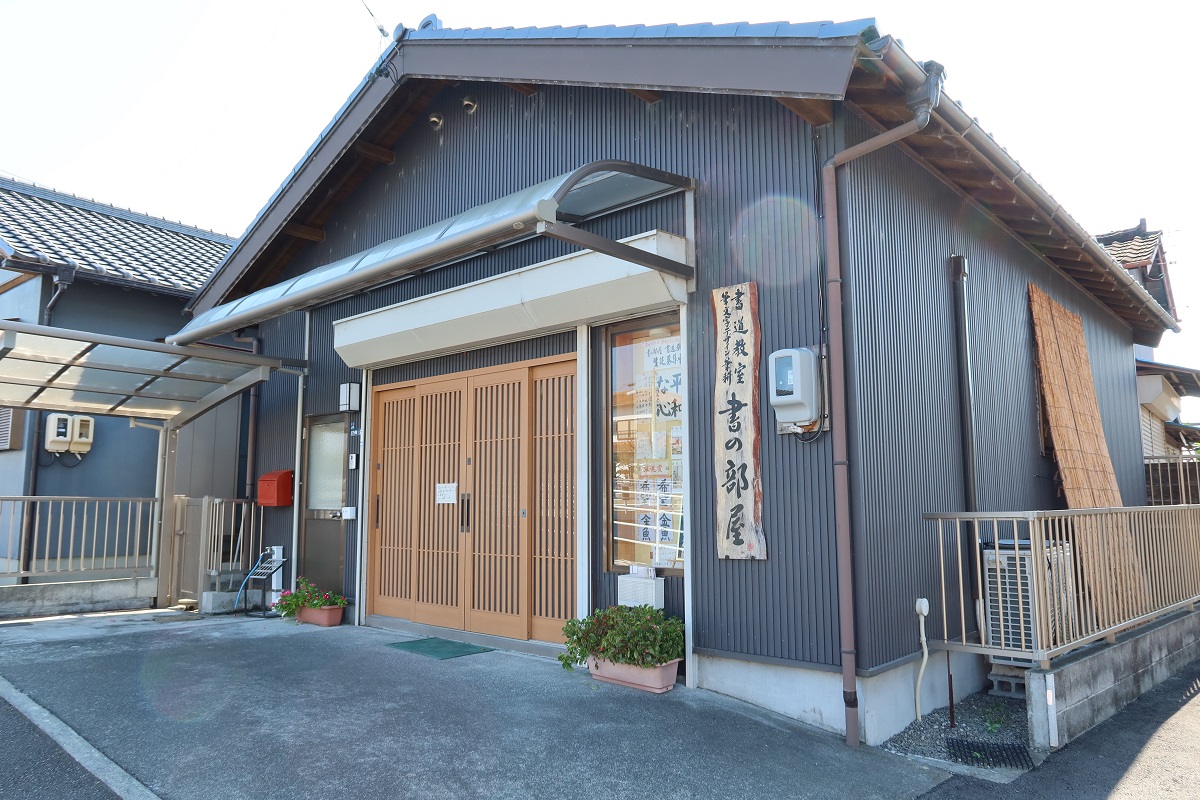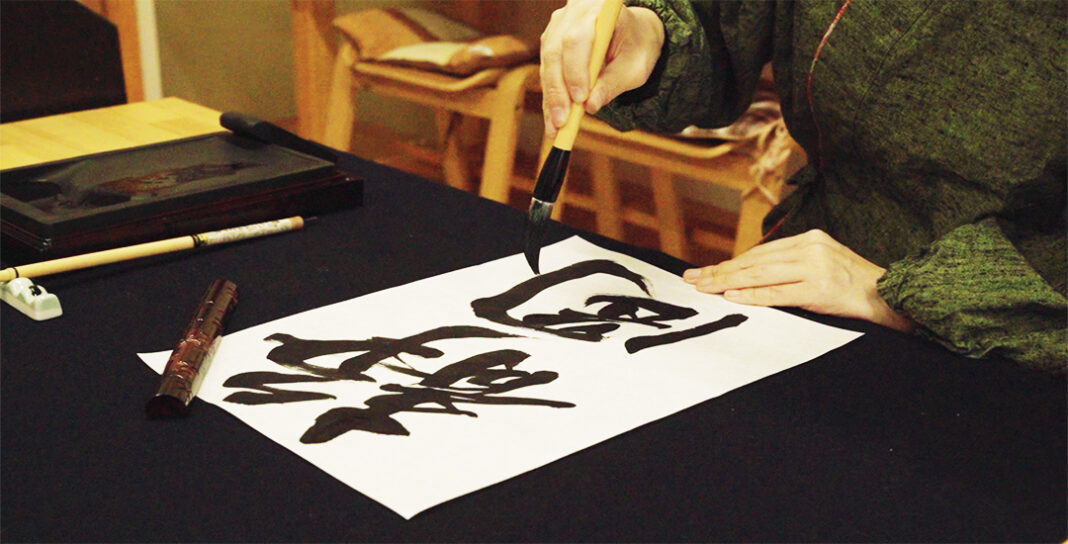Travel to a foreign country and you may realize how different it is from your home country, in many different ways. The food, the climate, the town… And the most noticeable difference is the language. One wonderful experience you can have in Japan is a calligraphy experience that will help you learn to write Japanese.
Come to Shizuoka and dive into the fascinating world of calligraphy!
Table of Contents
Meet the Sensei (teacher)

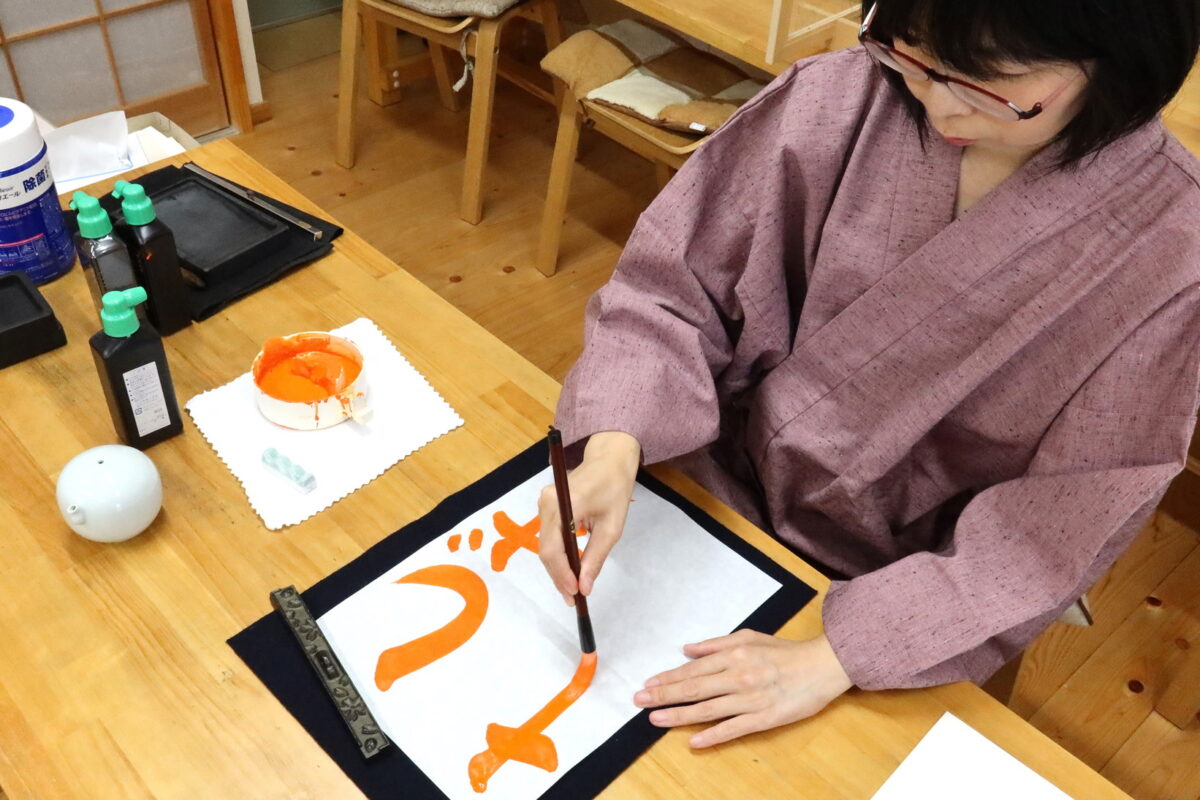
Mizue Koyama is waiting for you at the “Sho no heya (Calligraphy Room),” which doubles as a calligraphy classroom and atelier.
“Relax and have fun!”
Koyama Sensei started calligraphy in the first grade of elementary school. Since she was a child, she has loved writing, and she was eager to learn calligraphy, for which she has won numerous awards. Since opening her own Sho no heya (Calligraphy Room) in 2011, she has worked as a high school calligraphy teacher, given calligraphy performances at events, and created logo designs. She continues to spread the charm of calligraphy today.
Discover fascinating Japanese characters
Koyama Sensei uses a brush to write the word “Shizuoka” in Japanese.
She writes while adjusting the force applied to the brush.

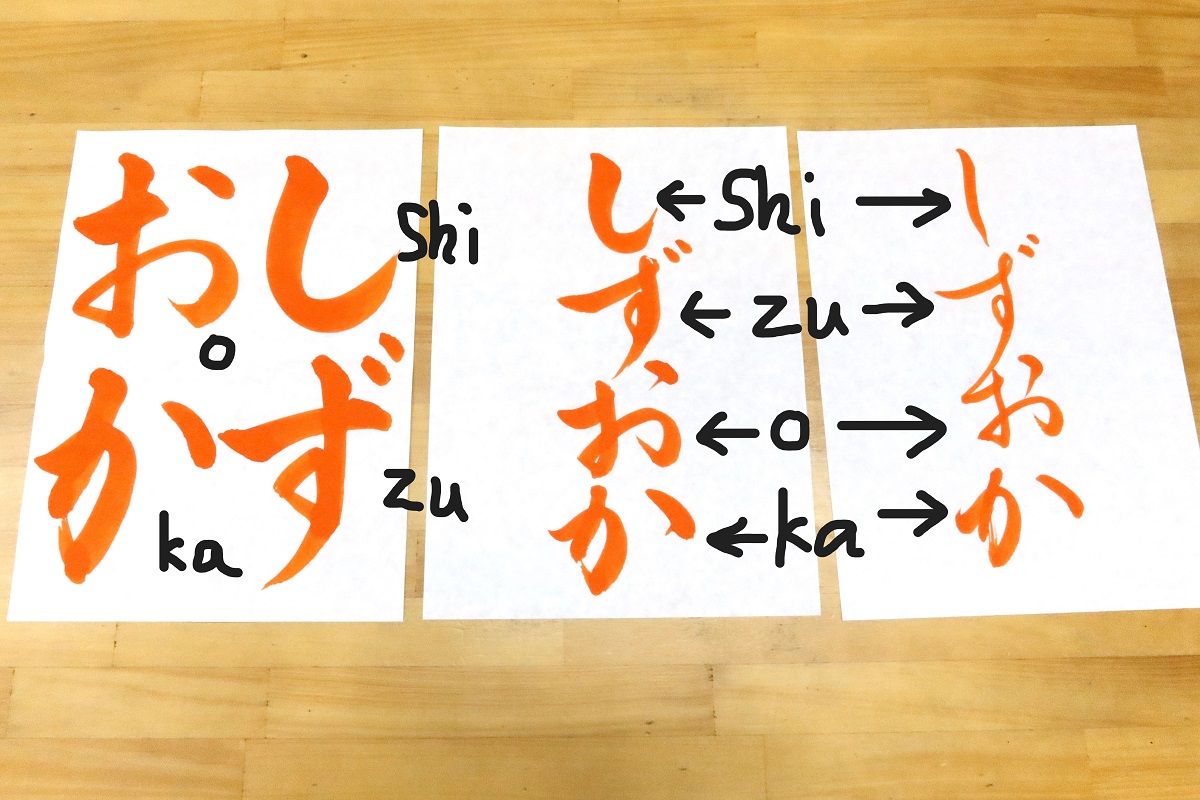
Each one looks different, but they are all pronounced Shizuoka.
In the picture on top, Shizuoka is written in kanji (Chinese logosyllabic characters), with the first character pronounced “shizu” and the second character pronounced “oka.” Each kanji character represents one or more meanings. Shizuoka is a “quiet, slightly elevated land.”
It is interesting to see how it differs from the alphabet, where each letter represents only a sound. Kanji has a long history and has evolved into its current forms through many changes to its original shapes. Koyama Sensei will tell you about what it originally looked like.
In the picture on the bottom, Shizuoka is written in hiragana (Japanese syllabic characters). Just like the alphabet, each character in hiragana represents a sound.
Try calligraphy
Start by writing “Shizuoka” in large hiragana, following Koyama Sensei’s example. The model is written in red ink, but you will write in black ink. It is interesting to see how the thickness of the line can change just by changing the amount of force applied to the brush or the speed of writing.
Try writing calligraphy yourself!

When you finish writing, show your work to Koyama Sensei.
Koyama Sensei will write advice in red ink so that you can improve your writing.

You should be happy to see a circle mark for calligraphy that you wrote well! The one on the right is the first attempt, and the one on the left is the second attempt. Now the characters align well, don’t they?
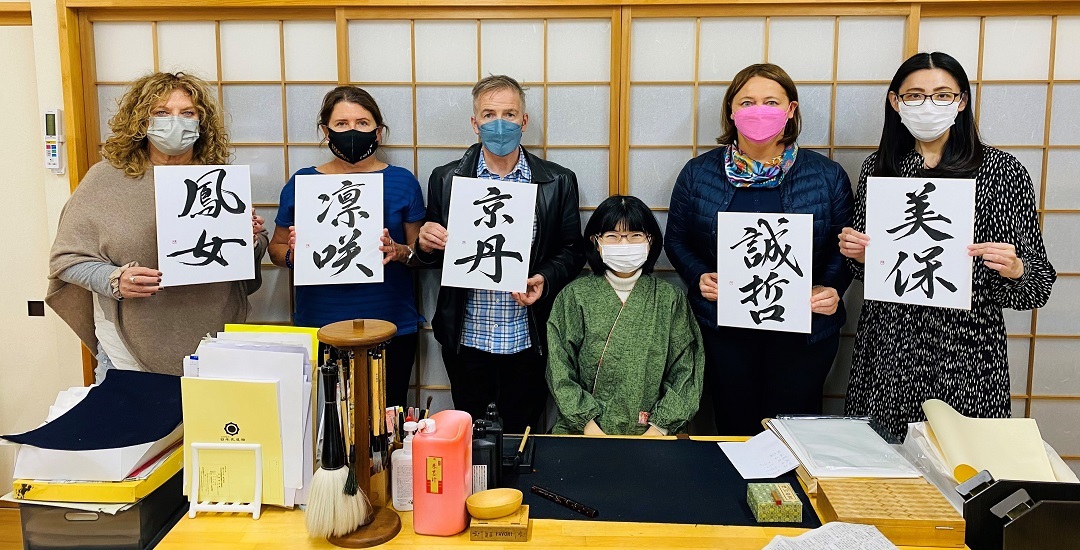
Improve your skills
Next, try writing some kanji. Kanji have finer lines than hiragana and are more difficult to write.
First write 茶 (cha: green tea), a specialty of Shizuoka, in kanji. It is read as “cha” with one character.
Looking at Koyama Sensei’s example, I noticed that there were times when I wrote carefully and slowly, and times when I went all in and wrote fluidly.
Just like before, once you have written the characters, you will receive advice from Koyama Sensei.
Gradually, you will get better at writing.
The one on the right is the first attempt, and the one in the center is the second attempt.
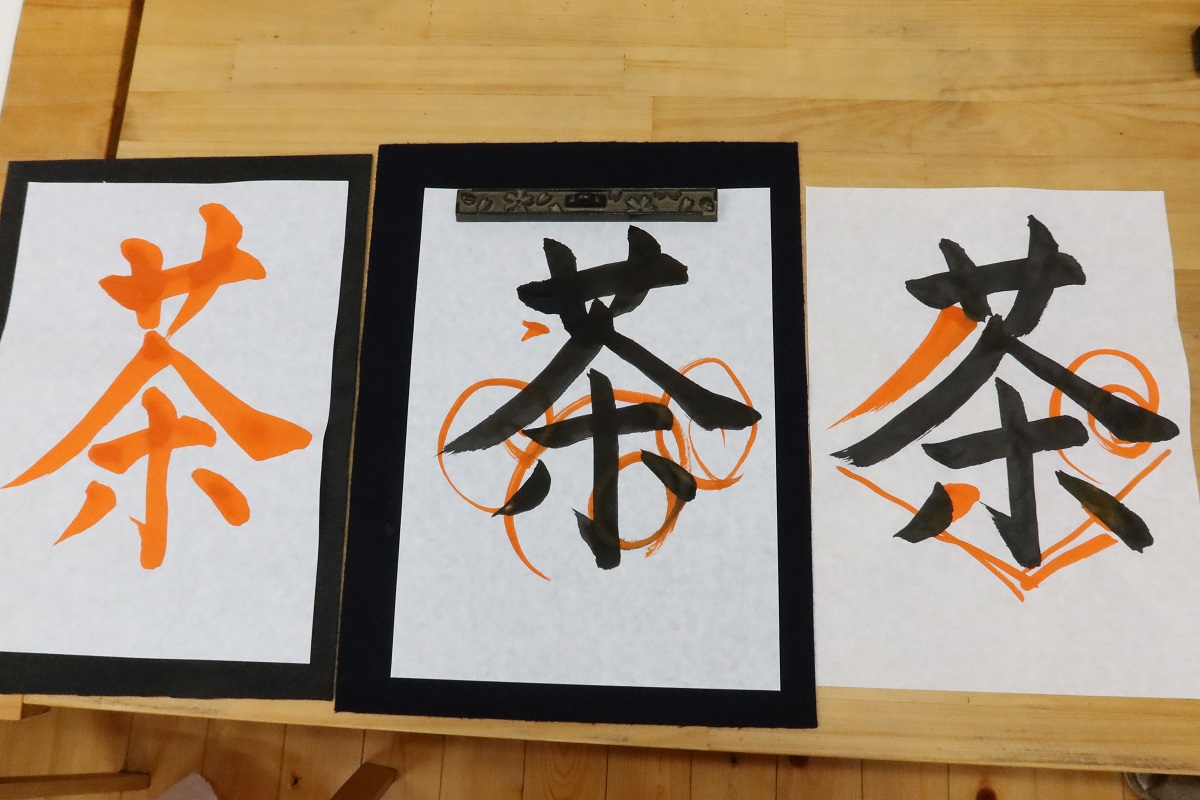
Get a unique present
At the end, Koyama Sensei will write your name in kanji on colored paper and give it to you as a present.
Today she has written the name of William (Adams), an Englishman who arrived in Japan during the Age of Exploration and was given the title of “samurai”.
Join the program and find out what meaning its kanji has and what kanji will be chosen for your name!
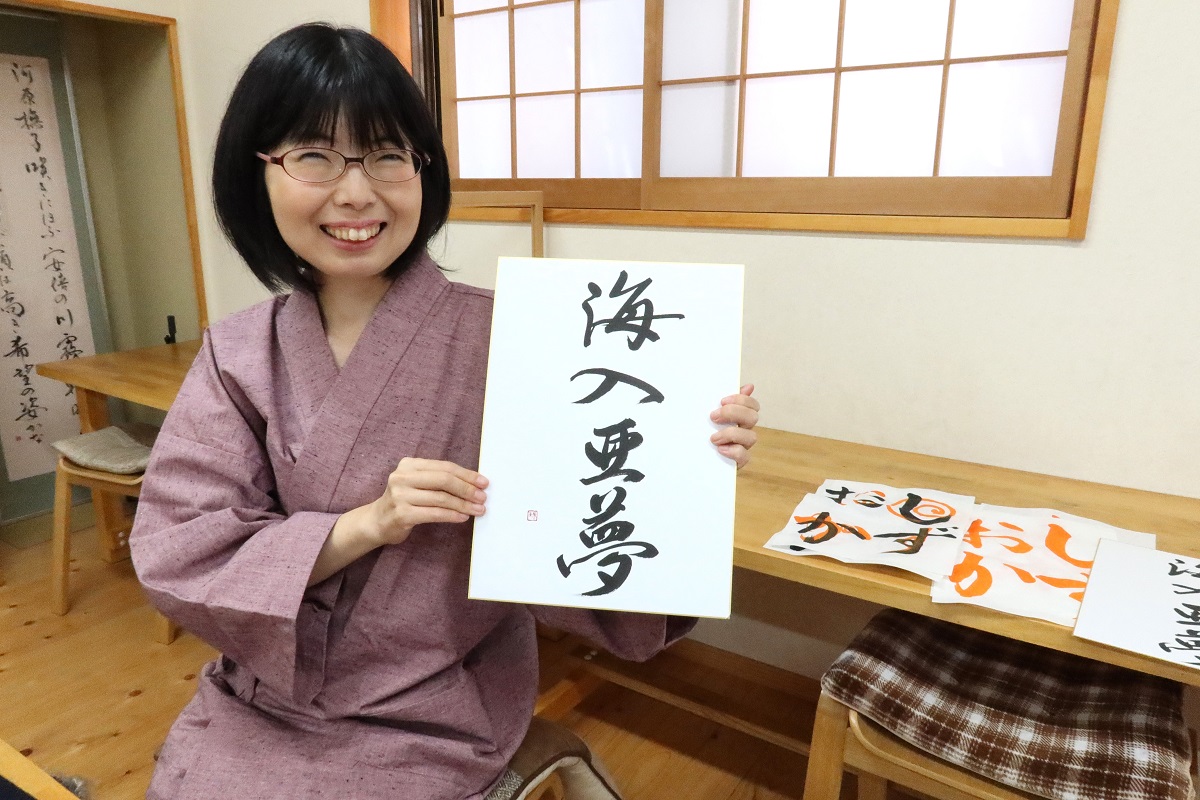
How to make reservations
Check out the details on this website!
Make a reservation at least 14 days before the day you want to go.
Access
About 20 minutes by taxi or rental car from JR Shizuoka Station.
About 25 minutes by bus from Platform 6 at the north exit of JR Shizuoka Station.
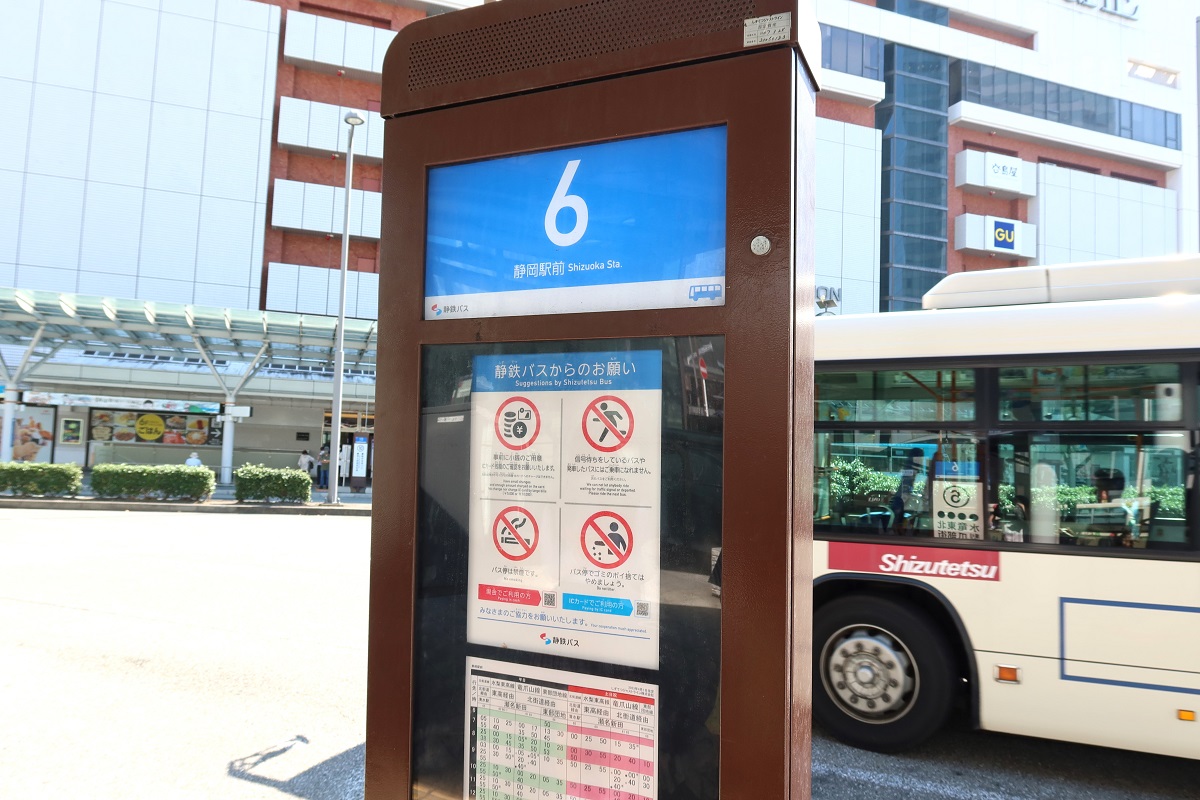
Get off at Higashi Chiyoda bus stop.
Walk about 3 minutes to the Sho no heya (Calligraphy Room).
